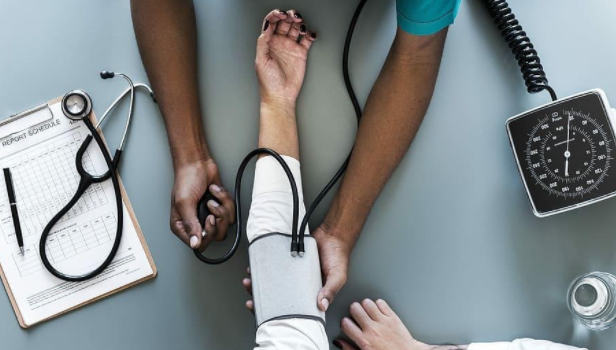

Symptoms
In most cases, hypertension does not have any kind of symptoms and is identified only when the doctor is examining you.
If there are symptoms identifies, they are further evaluated based on the different symptom categories for hypertension. Some underlying diseases can cause hypertension. Such conditions can be hypertensive vascular disease and are usually related to the secondary high blood pressure itself in the patients.
However, headaches are said to be one of the top symptoms of high blood pressure. Although all headaches cannot fall under the hypertension symptom categories, headaches experienced right after waking up fall under hypertension symptoms. The patients may also experience some other symptoms like fainting episodes, altered vision, light-headedness and vertigo, tinnitus. You can even feel impotence, palpitations, easy fatigability, and dizziness.
Untreated and malignant hypertension can also cause minor or significant damage to the essential organs like the heart, kidneys, arteries, eyes, and brain.
Diagnosis
For the sure-fire diagnosis of hypertension, your doctor will require your medical history along with undergoing a physical examination and lab tests. These tests can also be used to identify the reasons why patients are experiencing secondary hypertension. Your blood pressure will also be measured at least two times and on two different occasions.
If your family has a history of hypertension, and the family members have experienced high blood pressure, there is a chance you may have primary hypertension. If you have white coat hypertension, then you can use a 24-hour blood pressure monitoring device to diagnose the disease, and it can be done at home.
Secondary hypertension can be found in a person who is under 35 or over 55 years old. If there is secondary hypertension, other tests are conducted to know the hidden cause. Such tests will include medical visualization tests or ultrasound.
Treatment
If you are suffering from primary hypertension, the first treatment you will receive is a change in the diet, instructions for weight loss, and physical exercise. If this treatment is not working, you can also get hypertensive drugs to treat hypertension.
If you have secondary hypertension, your treatment will depend on the underlying condition, which is the reason for hypertension. If you are suffering from endocrine diseases, treatment will be given according to the condition which is impacting your hormones.
If the underlying condition is narrowing of blood vessels in the kidney, you will go through some medical imaging tests like transarterial angiography. This will confirm the location of the narrowed artery, and the doctor will insert a stent, a tiny metal mesh tube in the vessel to support it and make sure it stays open for smooth blood flow. The stent will also make sure the blood flow is restored to the kidney and other essential organs.
If you are suffering from resistant hypertension, you will be provided with the medication to lower the blood pressure. Scientists and drug experts are currently working to develop a more effective and personalized medicine to help hypertension patients. You can also undergo an invasive method like renal denervation. It is a minimally invasive process in which the doctor willingly damages the specific nerves in the renal artery so that the blood pressure of the patient can be lowered.
Dr Nikolas Charalambous is named among the most prominent interventional radiologist. Get a free consultation for a minimally invasive treatment of brain, neck, and spine.